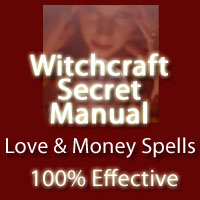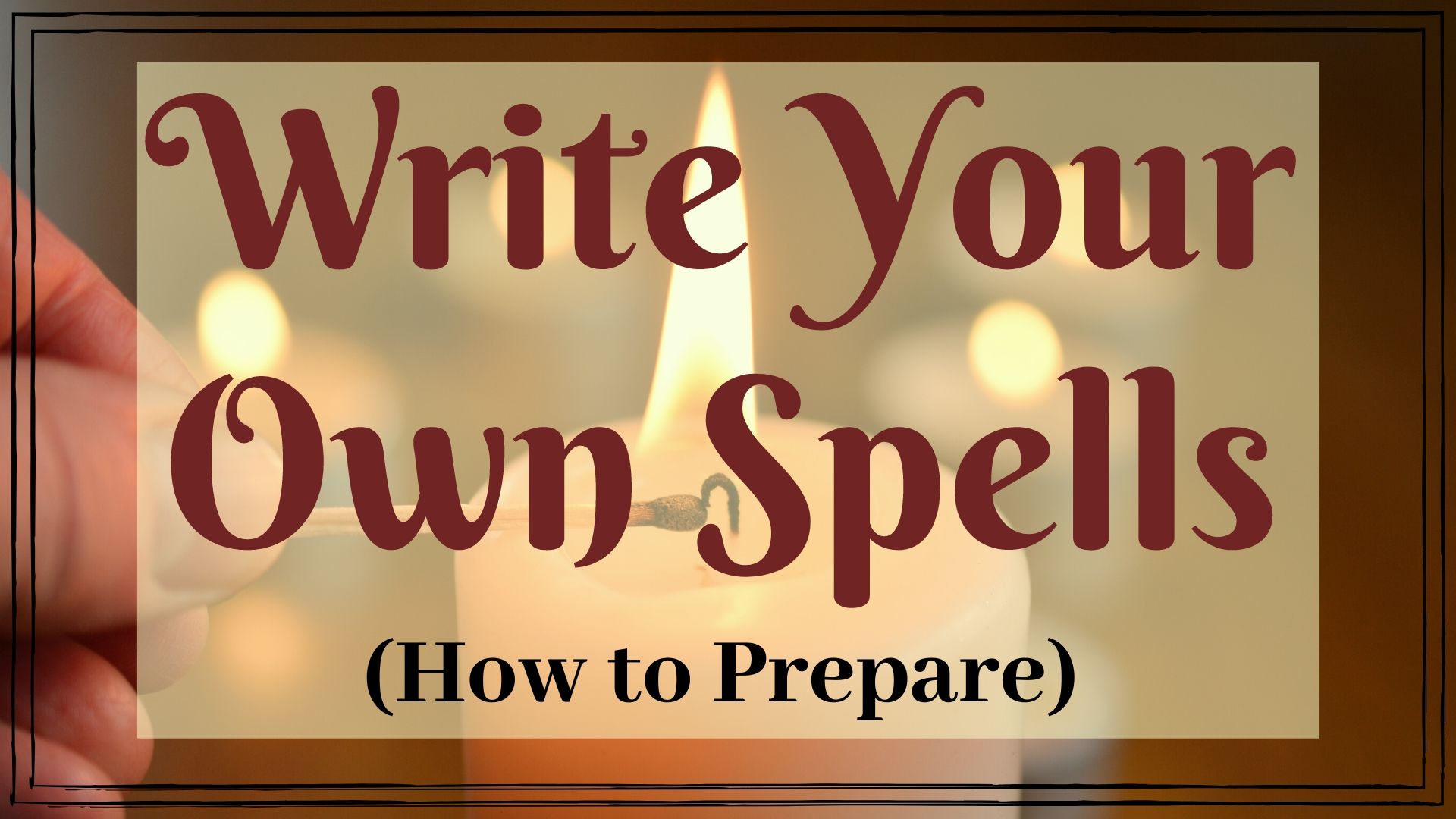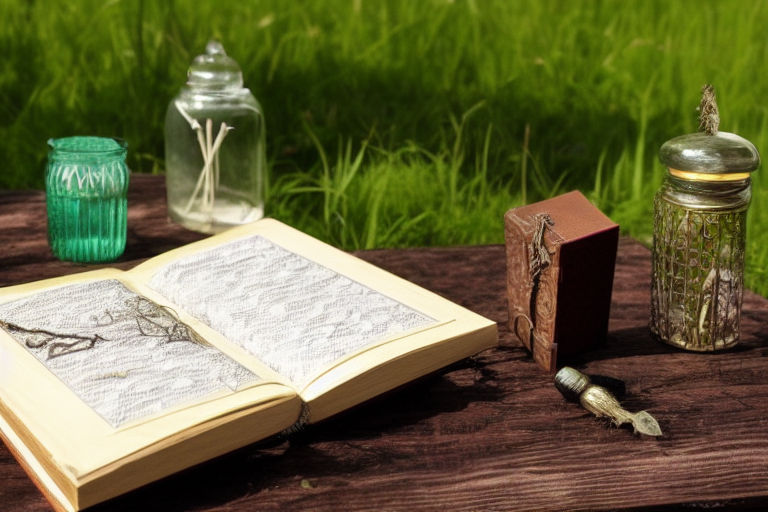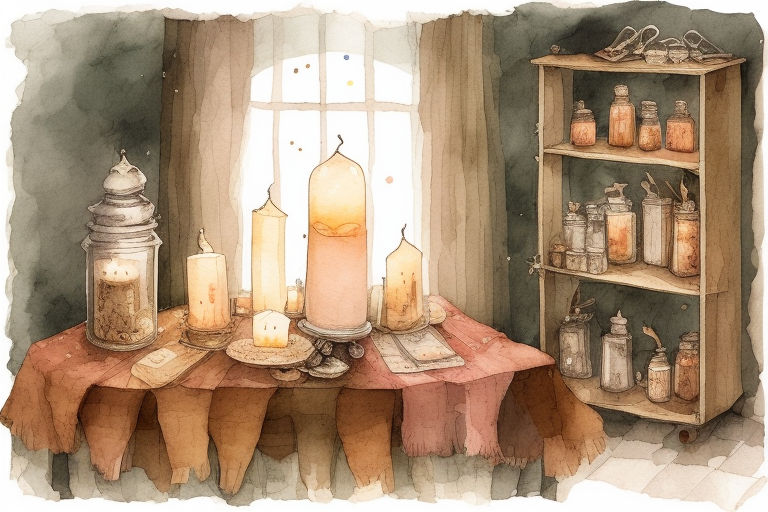16 Steps For a Complete Traditional Circle Casting & Closing
The witches’ Circle is a doorway between the worlds. While it affords some protection from negative influences, its primary function is to act as a sacred space where you can commune with gods and the universal sources of power.
The Circle is the transformer that converts the raw energy of the Otherworld so that it can be readily used in the mundane world. You control this transformation. You focus the energy toward a specific task. In practical terms, the Circle is a band of energy that surrounds your workspace. This energy field has been measured and photographed.
The charge separates you from the physical world and bars intrusion by influences that would hamper your work. The Circle is a gateway for the passage of power and wisdom from one plane to the other. Unlike the Circle used in ceremonial magic, the witches’ Circle enhances union with the Otherworld, while the former isolates the magician from direct contact with the intelligences that inhabit different planes.
There are two basic methods for casting a Circle.
One is meant for those operations that must be done quickly or for solitary rites that do not demand a formal setting, like daily meditations and practicing one’s skills.
The second method is for sabbats and esbats, or whenever you feel a need for a more formal magical setting. For either method, use a linear tool to draw the Circle.
You may trace a physical circle on the ground around you, or you may inscribe it in the air. Most witches use the athame to cast the Circle, but the wand or your finger are both equally effective. Some witches pick the tool they will use based on the nature of the work to be done.
The wand or staff represents fire, while the athame or sword commands the element of air in most traditions. Should a rite involve the elements of water or earth, the Circle is typically drawn with a bladed tool, with special attention being given to aspurging or presenting the shield or pentacle to the quarters.
In its abbreviated form, the Circle may be cast by inscribing the air in a clockwise (deosil) direction while saying, “I charge this Circle that it may protect me from all energies positive or negative that may come to do me harm. In the names of (goddess) and (god), so mote it be!”
This Circle is useful for simple tasks that require you to focus yourself and where interference from outside sources may prove disruptive to your concentration. You may expand upon this short version with anything you’d like. Feel free to call to the quarters any Otherworld influences that might be of assistance.
This Circle is for your personal use and comfort. Add whatever pleases you.
The more formal Circle takes more time to construct. The specific method depends on the tradition being followed. The instructions given here are drawn from Celtic and British traditions but may be adapted to any school you choose to follow by simply substituting the names and phrasing of that tradition for those in the text.
1) Prepare your altar, making sure that everything you will need for the work you are performing is in place. For complicated rituals, use a written checklist. Nothing ruins the mood like having to break Circle to search for a lighter.
2) Condition the space that will contain your Circle in keeping with the rite. Burn incense conducive to those forces you wish to employ. Decorate your altar with the appropriate colors.
3) Prepare yourself with a cleansing bath. Add salt and any herbs that correspond with the nature of your work.
4) If you do not practice skyclad, dress in garments that you reserve especially for ritual or in something that makes you feel extremely comfortable.
5) Be sure that all the items you intend to use have been consecrated in the past or, in the case of new tools, be prepared to dedicate them to the rite. This includes candles, writing implements, parchment, and everything else that you expect to serve you.
6) Orient yourself to the quarters by using a compass, the stars, or the sun. Don’t let small deviations trouble you. Magical north is much more important to your work than magnetic north.
7) Bless and consecrate yourself for the rite. Compose your own charge for this purpose. My personal favorite is the “three monkeys” blessing:
“Hear me, O Mighty Ones, bless me that I may hear no evil (cover ears), see no evil (cover eyes), and speak no evil (cover mouth), and be purified in Your sight.
In the names of (goddess) and (god), so mote it be!”
This should be done kneeling before the Circle in the eastern quarter. When you have finished and feel sufficiently prepared, enter the area where the Circle will be cast by stepping in with your right foot first.
When you have finished your rite, you will leave through this same quarter, also right foot first, in keeping with the old saying,
“As we enter, so we depart. Merry meet, merry part, and merry meet again.”
8) Light the altar candles unless your work contains instructions against doing so. Taking up your incense burner or a lighted candle, cense each quarter, ending with the same quarter that you started with.
Some traditions begin in the east, others in the north, while still others favor beginning with the direction whose element corresponds to the type of energy to be used in the rite.

9) Return the censer to the altar and take up the cup of water. Aspurge each quarter in the same manner.
10) Return the cup to the altar and pick up the athame. Immerse its point in the water saying,
“I exorcise thee, O creature of water, that thou cast out from thee all the impurities and uncleanliness of the spirits of phantasm.
In the Names of (goddess) and (god).”
11) Place the point of the athame into the container of salt, saying,
“Blessings be upon thee, O creature of salt.
Let all malignity pass henceforth and let all good enter in.
Ever are we mindful that as water purifies the body, so salt purifies the soul.
Wherefore do I bless thee in the Names of (goddess) and (god) that thou mayest aid me.”
12) Transfer three measures of salt to the cup of water and stir it with the athame three times, concentrating on the purifying effect the mixture is having on the blade.
13) Beginning at your chosen quarter, inscribe the Circle with your athame moving deosil, picturing a spark of blue light emanating from the point and surrounding as you proceed.
14) When you have completed your circumambulation, return to the altar and prepare yourself mentally to invoke the forces at the quarters. You may wish to dedicate yourself to the rite at this time. Use any words that have meaning to you, inviting the gods to watch as you align your body, mind, and spirit with the forces of the Otherworld.
15) Take your athame to the first quarter and salute. There are many formulas for this procedure, but they all involve showing respect for the forces you are about to invoke and end with the athame pointed toward the quarter.
16) Invoke the forces of the quarter. You may call a specific entity or the entire array of beings and energies associated with that element. Remember that you are issuing an invitation, not a command.

A common form of invocation is:
“Here ye O Mighty Ones, Dread Lords of the Watchtowers to the (cardinal point), I, (your Craft name) do summon you,
And invite your presence At this my Rite (Sabbat, Esbat et al.),
That my rites be witnessed, And my Circle be blessed.”
Follow this invocation by inscribing a fiery pentacle in the color representing the quarter, starting at the uppermost point and descending to the right. Make your motions grandiose, expressing your commitment to the work and your inner strength to those you are inviting to attend.
End your invocation with a clap of the hands or by ringing a bell, signifying that you KNOW that your invitation has been accepted. Repeat this procedure at each quarter, travelling deosil. Finish where you started with a final salute and return to the altar.
Say, “All ye I have summoned are welcome.”
Your Circle is now complete, and you may begin the rite.

Closing the Circle
To close the Circle, stand at the altar, facing the first cardinal point and say;
“Here ye, O mighty ones, I thank you for your presence at my Circle,
And ere ye depart to your lovely realms, I bid ye hale and farewell.”
Facing each of the quarters in turn, draw a banishing pentagram in the air with your athame, starting at the lower left hand point and moving toward the uppermost point. End with a final salute to the first quarter, saying;
“Hail and farewell, all.”
Pointing your athame toward the first cardinal point, move widdershins (counterclockwise) about the Circle, visualizing the blue energy field that has surrounded you being withdrawn into the athame or simply winking out.
When you have again arrived at the first quarter, raise your athame above your head and repeat;
“The Circle is open,
But never broken.
Merry meet, merry part,
And merry meet again!”
Exit the Circle where you entered, stepping out with right foot, as you entered.
Your Circle is a matter of personal preference. You should find some combination of these two methods to your liking.
Each Branch of Wicca has its own method of casting a Circle. The elements that they have in common are recognition of the four cardinal points and the belief that the Circle acts as a bridge between levels of existence. As you progress in the Craft, you will replace the words and ways of others with your own. Until that time, borrow freely from every available source that suits you.
The Circle should make you feel that you are in a safe place. Your emotional response should be similar to what you felt like as a child when you had found the perfect hiding place to escape from the world of parents and pestering siblings. The sanctuary of the Circle will shut out distractions.

While you should cast the Circle somewhere you will not be disturbed, such surroundings are not always available. You should learn to achieve peace of mind under the most distracting circumstances and be capable of casting a Circle anywhere.
Practice by meditating with the television on or, if you live in a city, open a window and let traffic noise in. Keep practicing until you can reach alpha and cast a Circle on the astral plane.
This capability will prove quite useful when an emergency arises that requires your immediate attention or when you are in a hostile environment. Use the short form for inscribing such Circles. If time allows, you may wish to call to the quarters or evoke a helpful entity.
Otherwise, find a location where you will not be directly addressed and proceed with your work. As a witch, you must learn to function magically in the mundane world. You will find yourself pressed into immediate action and must prepare for these occasions diligently.
Learn to ignore the confusion around you and work your magic. Laurie Cabot recommends establishing an “alpha trigger” that will transport you instantly to the alpha level under any circumstances. This trigger acts like a posthypnotic suggestion planted in your mind during a normal Circle.
When you are in Circle and at alpha, order yourself to return to alpha every time you perform a particular voluntary action, like crossing your fingers or folding your hands together so that the fingers interlace.
The trigger should be something that will not attract attention. Once you have used the trigger, picture your astral self casting a Circle, reciting your version of the shortened charge and any chant or calling you deem necessary.
When your work is completed, you may return to the conscious state by undoing the trigger. Should you feel the need for protection from outside forces that seem deliberately directed at you, or if you are about to enter a hostile environment that threatens your wellbeing, you can add two more points to your Circle and make it a protective sphere.
Once you have cast the Circle, stand at its center and inscribe another Circle, beginning at the spot directly over your head and proceeding along a line through the northern point and returning through the south until you are again pointing at the zenith above your head. As you do this, picture yourself being surrounded by a sphere of blue light that will act as a barrier against all harm. Unlike the Circle, which is meant to stay in one place, the sphere can accompany you anywhere.
This protective shield will repel any effort to assault you spiritually or mentally. The sphere can prove especially useful when attending family gatherings where dear old Aunt Emma feels compelled to point out the error of your Wiccan ways condemns your soul to Hell.
The same holds true for preventing co-workers from subjecting you to assaults founded on envy. Whenever you feel the need to isolate yourself from the bad influences of those around you, use the sphere.
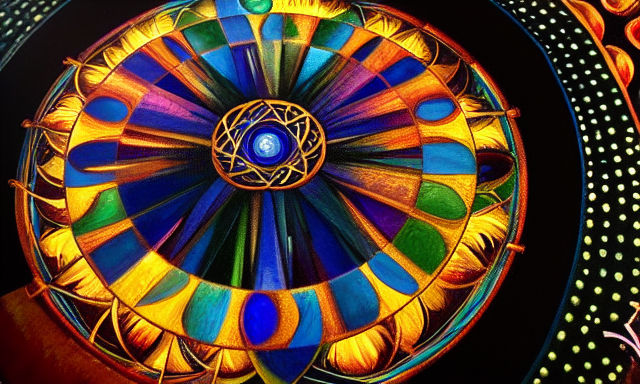
FAQs
Can I practice witchcraft without following a specific religion?
Absolutely! Witchcraft is a practice that can be independent of any particular religion. Many witches consider themselves eclectic, drawing inspiration from various spiritual traditions and beliefs. As long as you respect the ethics of witchcraft and its core principles, you can adapt your practice to align with your personal spirituality.
What are some recommended books for beginners in witchcraft?
There are several excellent books that can provide a solid foundation for beginners in witchcraft. Some popular recommendations include “Witchcraft Today” by Gerald Gardner, “To Ride a Silver Broomstick” by Silver RavenWolf, “The Spiral Dance” by Starhawk, “Buckland’s Complete Book of Witchcraft” by Raymond Buckland, and “The Green Witch” by Arin Murphy-Hiscock.
How can I create my own spells?
Creating your own spells is a wonderful way to personalize your magical practice. Start by defining your intention and gather corresponding tools and ingredients. Research correspondences, such as herbs, colors, and crystals, that align with your goal. Write an incantation or affirmation that resonates with you and perform the spell with focused intent, visualizing the desired outcome. Trust your intuition and be creative in crafting spells that reflect your unique energy.
Can I work with deities from different pantheons?
Yes, it is possible to work with deities from different pantheons. Many witches honor and work with gods and goddesses from various cultures. However, it is essential to approach them with respect and cultural sensitivity. Take the time to research and understand the mythology, symbols, and traditions associated with the deities you wish to work with, and be mindful of any specific rituals or offerings they may require.
How do I cast a formal circle for sabbats or esbats?
Formal circle casting requires more time and attention to detail. Begin by preparing your altar and consecrating the space. Orient yourself to the quarters, bless and consecrate yourself, and light the altar candles. Cense each quarter with incense and aspurge them with water. Follow specific invocations for each quarter, inscribing fiery pentacles in the corresponding colors. Complete the circle by invoking the forces at each quarter and finish with a final salute at the altar.
What tools can I use to cast a circle?
The choice of tools for casting a circle is personal and depends on your tradition and preference. Common tools include an athame (ritual knife), wand, or even your finger. Select a tool that resonates with you and matches the nature of your work. For rituals involving specific elements, you may choose a bladed tool or use a shield or pentacle for aspurging.
What is the purpose of casting a circle?
Casting a circle serves multiple purposes. It creates a sacred space where you can commune with deities and tap into universal sources of power. The circle acts as a protective barrier, shielding you from negative influences and allowing you to focus your energy for specific magical tasks.
How can I incorporate spellwork into my daily routine?
Integrating spellwork into your daily routine can be a powerful way to infuse magic into your life. Consider starting with simple rituals, such as lighting a candle or saying a short incantation, to set intentions for the day. You can also create personalized morning or evening rituals that include meditation, visualization, or energy work. Find practices that resonate with you and make them a regular part of your daily routine to cultivate a deeper connection with your craft.
Is it necessary to have a dedicated altar for practicing witchcraft?
Having a dedicated altar is not mandatory for practicing witchcraft, but it can serve as a sacred space for your rituals and spellwork. An altar can be as simple or elaborate as you desire, representing elements or symbols that hold significance for you. It’s a place to focus your energy, set up tools, and connect with your spiritual practice. However, if you don’t have the space or privacy for a physical altar, you can create a virtual or portable altar, or simply work with the natural elements around you.
Can I practice witchcraft with a group or coven?
Absolutely! Witchcraft can be practiced individually or in a group setting. Many witches find solace, support, and shared wisdom in joining or forming a coven. Working with a group allows for collaborative rituals, learning from each other’s experiences, and a sense of community. If you’re interested in joining a coven, consider reaching out to local pagan or witchcraft groups, attending events or workshops, or exploring online communities to find like-minded individuals.
How can I enhance my intuition and psychic abilities?
Developing intuition and psychic abilities is an ongoing journey that requires practice and self-awareness. Start by honing your meditation skills, as it helps quiet the mind and enhances your ability to tune into subtle energies. Regularly practice divination methods such as tarot reading, scrying, or pendulum work to strengthen your psychic senses. Keep a journal to record your dreams, intuitive impressions, and synchronicities. Additionally, surrounding yourself with natural elements, such as crystals or herbs, can also help amplify your intuitive abilities.
How can I protect myself energetically while practicing witchcraft?
Energetic protection is essential when practicing witchcraft. There are various methods you can use to shield yourself from negative energies or unwanted influences. Visualizations, such as envisioning yourself surrounded by a protective shield of light, can be effective. Crystals like black tourmaline or amethyst can also act as energetic shields. Additionally, practicing grounding and centering techniques, regularly cleansing your space and tools, and setting clear boundaries are crucial for maintaining energetic protection in your craft.
More Information for Spellcrafting
Casting and closing are integral steps in the practice of witchcraft, allowing witches to manifest their desires, work with energy, and create positive changes in their lives. By following the steps outlined and incorporating them into your magical practice, you can develop a strong foundation for successful spellcasting and ritual work.
Remember to approach your craft with respect, mindfulness, and an open heart, allowing the magic to flow through you. Embrace your unique journey as a witch, and may your path be filled with empowerment, growth, and the fulfillment of your intentions.
Blessed be!



